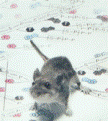Papers in the Biological Sciences

Jay F. Storz Publications
Document Type
Article
Date of this Version
4-2013
Citation
The Journal of Experimental Biology 216, 1160-1166; doi:10.1242/jeb.075598
Abstract
Small mammals face especially severe thermoregulatory challenges at high altitude because the reduced O2 availability constrains the capacity for aerobic thermogenesis. Adaptive enhancement of thermogenic performance under hypoxic conditions may be achieved via physiological adjustments that occur within the lifetime of individuals (phenotypic plasticity) and/or genetically based changes that occur across generations, but their relative contributions to performance differences between highland and lowland natives are unclear. Here, we examined potentially evolved differences in thermogenic performance between populations of deer mice (Peromyscus maniculatus) that are native to different altitudes. The purpose of the study was to assess the contribution of phenotypic plasticity to population differences in thermogenic performance under hypoxia. We used a common-garden deacclimation experiment to demonstrate that highland deer mice have enhanced thermogenic capacities under hypoxia, and that performance differences between highland and lowland mice persist when individuals are born and reared under common-garden conditions, suggesting that differences in thermogenic capacity have a genetic basis. Conversely, population differences in thermogenic endurance appear to be entirely attributable to physiological plasticity during adulthood. These combined results reveal distinct sources of phenotypic plasticity for different aspects of thermogenic performance, and suggest that thermogenic capacity and endurance may have different mechanistic underpinnings.
Includes Supplementary material.


Comments
© 2013. Published by The Company of Biologists Ltd. Used by permission.